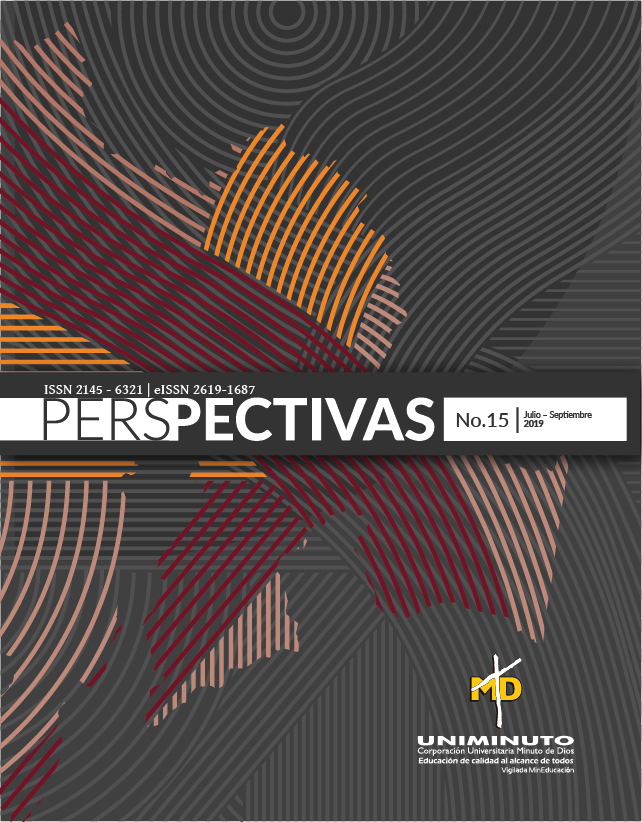Evaluación temporal del impacto sonoro socio-ambiental, en la zona de influencia del antiguo Aeropuerto Mariscal Sucre de Quito
Barra lateral del artículo
Publicado:
2019-07-04
Cómo citar
Evaluación temporal del impacto sonoro socio-ambiental, en la zona de influencia del antiguo Aeropuerto Mariscal Sucre de Quito. (2019). Perspectivas, 4(15), 11-26. https://revistas.uniminuto.edu/index.php/Pers/article/view/2062
Detalles del artículo
Contenido principal del artículo
Alexis Morales Castillo
Ingeniero Ambiental – Universidad Internacional SEK
Mónica Delgado
Magíster en Gestión Ambiental – Universidad Internacional SEK
Elena Burgaleta
PhD en – Universidad Internacional SEK
Katty Coral
Master en Ciencias (Ingeniería Ambiental) – Universidad Internacional SEK
Resumen
Se evaluó, en dos periodos de tiempo, el impacto del ruido ambiental tras el traslado del antiguo Aeropuerto Mariscal Sucre de Quito a Tababela en el año 2013, con el fin de conocer los cambios de ruido ambiental en decibeles (dB A) en la zona, además de determinar los cambios en la percepción auditiva que han experimentado las personas que habitan en el área de estudio. Para ello, se revisaron datos de medición de ruido de la zona registrados en anteriores estudios realizados por la Universidad Internacional SEK (UISEK),
comparándolos con valores de medición experimental actuales, lo cual constituyó una primera evaluación cuantitativa. Adicionalmente se efectuaron encuestas de percepción a personas que residen o laboran en el sector, constituyéndose en una evaluación cualitativa. El muestreo cuantitativo fue realizado durante los siete días de la semana de lunes a domingo de 7:00 a 23:59, obteniéndose como resultado la disminución de ruido ambiental en un promedio semanal de 6% en comparación con el estudio realizado en el 2011 por César Andrade. Con los datos cualitativos se determinó que la percepción al ruido disminuyó en el sector, 39% de la población percibe que el ruido ha bajado, generándose mayor confort acústico, el 33% de la población encuestada comentó que, a la fecha, no presentan
efectos en la salud, por lo que se puede concluir que la ubicación del antiguo Aeropuerto en la zona urbana perturbaba el buen vivir de los lugareños, debiendo ser el ruido ambiental un parámetro de control para la ubicación de este tipo de infraestructuras.
comparándolos con valores de medición experimental actuales, lo cual constituyó una primera evaluación cuantitativa. Adicionalmente se efectuaron encuestas de percepción a personas que residen o laboran en el sector, constituyéndose en una evaluación cualitativa. El muestreo cuantitativo fue realizado durante los siete días de la semana de lunes a domingo de 7:00 a 23:59, obteniéndose como resultado la disminución de ruido ambiental en un promedio semanal de 6% en comparación con el estudio realizado en el 2011 por César Andrade. Con los datos cualitativos se determinó que la percepción al ruido disminuyó en el sector, 39% de la población percibe que el ruido ha bajado, generándose mayor confort acústico, el 33% de la población encuestada comentó que, a la fecha, no presentan
efectos en la salud, por lo que se puede concluir que la ubicación del antiguo Aeropuerto en la zona urbana perturbaba el buen vivir de los lugareños, debiendo ser el ruido ambiental un parámetro de control para la ubicación de este tipo de infraestructuras.
Palabras clave:
Medio ambiente, Contaminación sonora, Zona urbana, Sociología urbana, Efectos de las actividades humanas.
Referencias
Aguirre, C., & Ramos, R. (2005). Impacto del ruido urbano en el valor de los Departamentos Nuevos: un Estudio de Precio Hedónico aplicado a Bienes Ambientales. Revista de Construcción.
Andrade, A., & Coral, I. N. G. K. (2011). Mapa de ruido de la red vial del D.M.Q. Universidad Internacional SEK. Retrieved from http://repositorio.uisek.edu.ec/handle/123456789/176
Berglund, B., Lindvall, T., & Schwela, D. (2000). New WHO guidelines for community noise. Noise & Vibration Worldwide, 31(4), 24–29. https://doi.org/10.1260/0957456001497535
De Esteban Alonso, A. (2003). Contaminación acústica y salud. Contaminación Acústica Y Salud Noise Pollution and Health Alfonso, 20.
Environmental Systems Research Institute (ESRI). (2012). ARC GIS 10.1 (Redlands). CA.
Griffiths, M. (2009). Environmental noise. Postnote, (338), 1–4. https://doi.org/10.1097/01.NCQ.0000324585.68966.51
Herrera, M. (2011). Fórmula para cálculo de la muestra poblaciones finitas. Hospital de Roosvelt, 2. Retrieved from https://investigacionpediahr.files.wordpress.com/2011/01/formula-para-cc3a1lculo-de-la-muestra-poblaciones-finitas-var-categorica.pdf
MAE, M. del A. (2015). Acuerdo Ministerial 097-A. Quito.
Morillas, A. (2016). Muestreo En Poblaciones Finitas. Revista Da Sociedade Brasileira de Medicina Tropical, 298(1), 2171–2181. https://doi.org/10.1016/j.jacc.2013.08.1660
Muzet, A. (2007). Environmental noise, sleep and health. Sleep Medicine Reviews. https://doi.org/10.1016/j.smrv.2006.09.001
Paulo Henrique Trombetta Zannin, Fabiano Belisário Diniz, Alfredo Calixto, W. A. B. (2001). Environmental Noise Pollution in Residential Areas of the City of Curitiba Paulo. Acustica, 87(8583), 407–413.
Restrepo, F., Osorio, J. D., & Patiño Valencia, B. A. (2011). Valoración económica del ruido: una revisión analítica de estudios. Semestre Económico, 14, 25. https://doi.org/0120-6346
Villavicencio, E. (2011). El tamaño muestral en tesis de post grado. ¿Cuantas personas debo encuestar? In ResearchGate. https://doi.org/10.13140/RG.2.1.3337.2243
Andrade, A., & Coral, I. N. G. K. (2011). Mapa de ruido de la red vial del D.M.Q. Universidad Internacional SEK. Retrieved from http://repositorio.uisek.edu.ec/handle/123456789/176
Berglund, B., Lindvall, T., & Schwela, D. (2000). New WHO guidelines for community noise. Noise & Vibration Worldwide, 31(4), 24–29. https://doi.org/10.1260/0957456001497535
De Esteban Alonso, A. (2003). Contaminación acústica y salud. Contaminación Acústica Y Salud Noise Pollution and Health Alfonso, 20.
Environmental Systems Research Institute (ESRI). (2012). ARC GIS 10.1 (Redlands). CA.
Griffiths, M. (2009). Environmental noise. Postnote, (338), 1–4. https://doi.org/10.1097/01.NCQ.0000324585.68966.51
Herrera, M. (2011). Fórmula para cálculo de la muestra poblaciones finitas. Hospital de Roosvelt, 2. Retrieved from https://investigacionpediahr.files.wordpress.com/2011/01/formula-para-cc3a1lculo-de-la-muestra-poblaciones-finitas-var-categorica.pdf
MAE, M. del A. (2015). Acuerdo Ministerial 097-A. Quito.
Morillas, A. (2016). Muestreo En Poblaciones Finitas. Revista Da Sociedade Brasileira de Medicina Tropical, 298(1), 2171–2181. https://doi.org/10.1016/j.jacc.2013.08.1660
Muzet, A. (2007). Environmental noise, sleep and health. Sleep Medicine Reviews. https://doi.org/10.1016/j.smrv.2006.09.001
Paulo Henrique Trombetta Zannin, Fabiano Belisário Diniz, Alfredo Calixto, W. A. B. (2001). Environmental Noise Pollution in Residential Areas of the City of Curitiba Paulo. Acustica, 87(8583), 407–413.
Restrepo, F., Osorio, J. D., & Patiño Valencia, B. A. (2011). Valoración económica del ruido: una revisión analítica de estudios. Semestre Económico, 14, 25. https://doi.org/0120-6346
Villavicencio, E. (2011). El tamaño muestral en tesis de post grado. ¿Cuantas personas debo encuestar? In ResearchGate. https://doi.org/10.13140/RG.2.1.3337.2243

